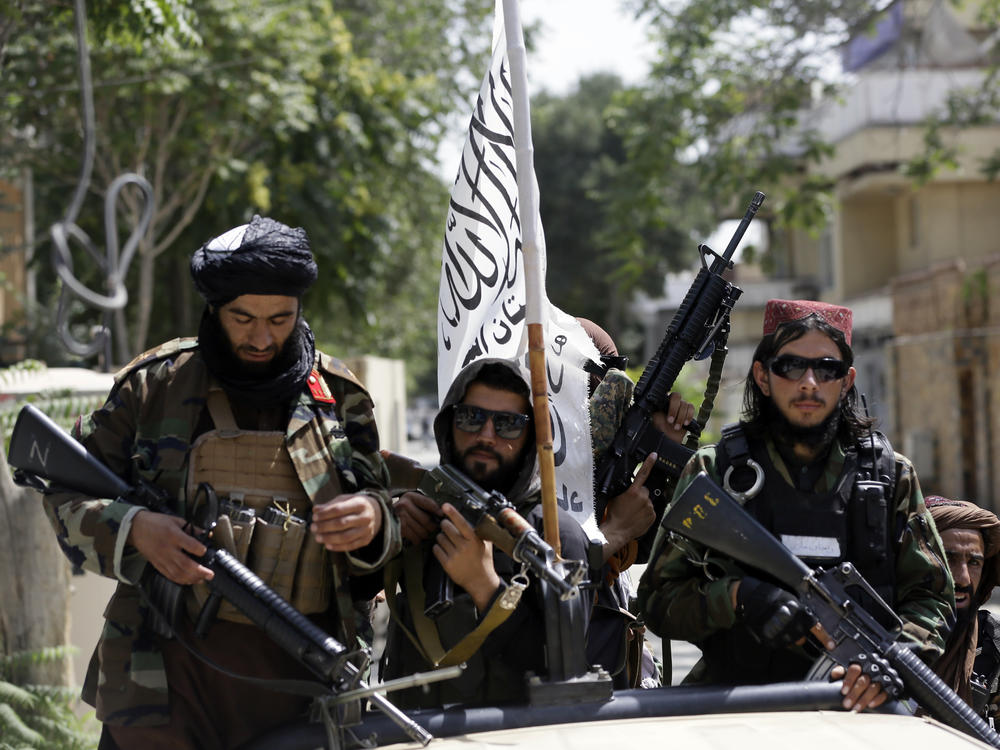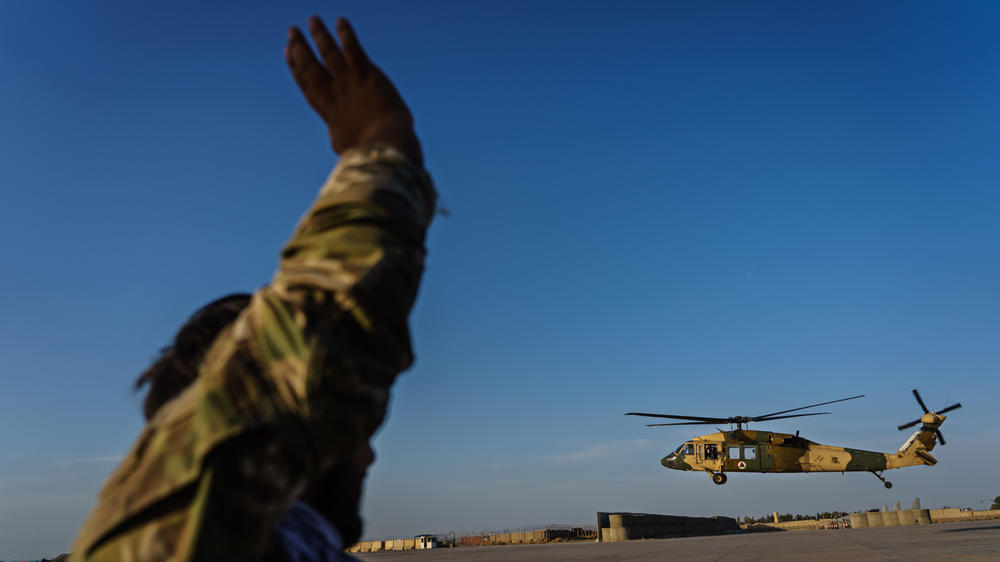Section Branding
Header Content
How Valuable Are The U.S. Weapons The Taliban Just Captured?
Primary Content
Journalist Hollie McKay was in the northern Afghan city of Mazar-i-Sharif when Afghan security forces fled ahead of advancing Taliban fighters last weekend. In the aftermath, the road out of town was littered with U.S.-made armored vehicles that the Afghan military had left behind.
"On that road there is a lot of equipment that has been abandoned," McKay said by phone from neighboring Uzbekistan. "It was sort of unclear to me whether (the vehicles) were already destroyed by the soldiers, or that they were functioning and that the Taliban hadn't quite figured out how to use them. But there was certainly a good bunch of them along that single road into Uzbekistan."
Similar scenes have been repeated across the country: In the weeks before the Taliban seized Kabul, retreating Afghan forces ditched billions of dollars' worth of U.S.-supplied military hardware — from assault rifles to Black Hawk helicopters.
The Taliban wasted no time in gloating over their new war booty. Photos and video posted to social media show Taliban posing with captured aircraft, trucks, Humvees, artillery guns and night-vision goggles. Such equipment could be used to suppress internal dissent or fight off their rivals.
The U.S. military removed planes, heavy weapons and sophisticated military equipment as it began winding down its operations in Afghanistan in the spring. But it couldn't take home 20 years of accumulated hardware and instead left much of it to the Afghan military.
National security adviser Jake Sullivan acknowledged as much earlier this week.
"We don't have a complete picture, obviously, of where every article of defense materials has gone, but certainly, a fair amount of it has fallen into the hands of the Taliban," he said.
A report last month by the Special Inspector General for Afghanistan Reconstruction (SIGAR) indicates that the U.S.-backed Afghan military possessed more than 150 aircraft.
This includes four C-130 transport aircraft, 23 Brazilian-made A-29 "Super Tucano" turboprop ground-attack aircraft, 45 UH-60 Black Hawk helicopters, and 50 smaller MD-530 choppers. In addition, Afghan forces were given more than 30 military versions of Cessna single-engine fixed-wing aircraft.
It's not clear how many of those aircraft are still in Afghanistan. Uzbekistan says that hundreds of Afghan troops fled there last weekend with 22 military planes and 24 helicopters.
There's a challenge in flying a Black Hawk
There's a big difference between having a Black Hawk helicopter and learning to use it effectively.
"It's not something that you can do in a week or a month," says Bradley Bowman, a former Black Hawk pilot in the Army who is currently the senior director of the Center on Military and Political Power at the Foundation for Defense of Democracies.
"Someone could get in there, maybe find some operating manuals and figure out how to get the engine started, the rotors turning and get it up in the air," he tells NPR. "But they'd probably be more of a danger to themselves than to anyone else at that point."
Even so, Bowman says, "I don't think this is an insurmountable problem for the Taliban and their al-Qaida partners."
A lot of other items in the Taliban's new arsenal could easily be put to use, says Jonathan Schroden, the director of the Countering Threats and Challenges Program at the Center for Naval Analyses.
They "don't need a lot of skill or training to use" small arms and night-vision devices, he tells NPR.
Then there's the question of maintenance and spare parts. U.S. contractors maintained the Afghan military's Black Hawks. In the hands of the Taliban, they "would break and they would not be able to fix them," Schroden says. Same goes for the C-130s, he says, which, like the Black Hawks, have "fairly sophisticated maintenance requirements."
By contrast, if the Taliban could find somebody who knows anything about airplane engines, they could probably keep the A-29s flying, Schroden says.
For vehicles like the up-armored Humvees, known as MRAPS, "they've captured so many of them that they could cannibalize the ones they have for spare parts to keep the others running," he says.
Made back in the U.S.S.R.
Asked what weapon he thinks is the most lethal in the Taliban's new arsenal, Schroden doesn't name an American system, but a Russian one — the D-30 howitzer, a 122-mm towed artillery piece.
He says the weapons are lethal and "it's clear the Taliban know how to use them."
And the Taliban can always just sell off anything they can't learn to use or maintain themselves.
On the Black Hawks and A-29s, for instance, "presumably there is some avionics, communications equipment, other things on those aircraft that they could sell," Bowman says.
Iran might be interested, as might China or Russia, if for no other reason than to "humiliate America," he says. Despite the sectarian divide between the Sunni Taliban and Iran's Shiite government, there are some signs of cooperation
Schroden agrees, pointing to high-tech "sensor balls" on the front of some aircraft.
"They have sophisticated electro-optics, optical equipment, as well as signals intelligence type stuff in them," he says. "Those things might be of interest to other countries as well."
Copyright 2021 NPR. To see more, visit https://www.npr.org.


